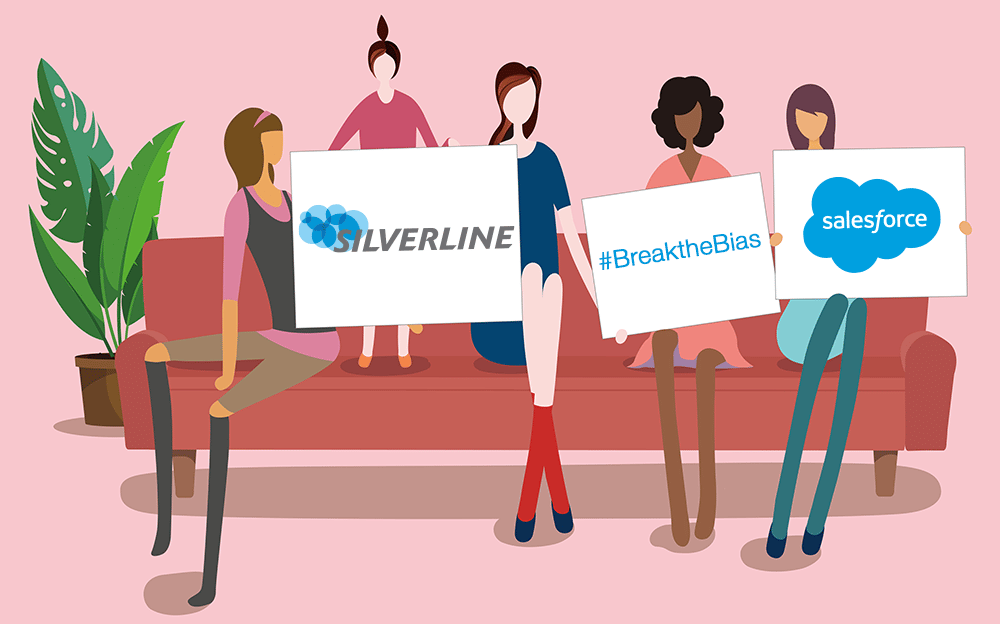Back in March, we celebrated this year’s International Women’s Day with a theme of #BreakTheBias. As a leader in the Silverline Media & Entertainment division, I think it’s important to keep crucial conversations like this one going. One of my top priorities is to extend equal opportunity and equal grace to all members of the team.
Gender bias does exist within the media industry, as with many other professions.
I think it’s important to be comfortable saying that. Only when we acknowledge its existence can we recognize and address it as it’s happening.
Gender bias begins to manifest in childhood, where we see toys and clothes clearly marketed to boys or girls. It progresses as college students select degree programs, and entry-level candidates accept their first roles. Within technical degrees, the majority of enrollments are men, which means there are more men getting accepted into entry-level technical roles, while we see more women in administrative, planning, and coordination roles.
I make an intentional effort to lead a gender-balanced team. During recruitment we are flexible to consider and hire candidates with all different kinds of backgrounds and education. We then offer training and support so all team members have opportunities for advancement and to pursue their career aspirations.
Gender bias also permeates everyday work activity. I’ve often walked into a room of clients with a male colleague, and found that everyone assumes I am the junior person. The instant assumption is that the man must be the boss. I’ve been categorized as emotional for displaying empathy and support for colleagues when a man is called a great leader for doing the same.
These are often unconscious biases and there are things we can do to mitigate the impact. I show my team through my actions that it is okay to have priorities outside of work that sometimes take precedence. I block off 30 minutes on my calendar each day to drop my children off at school. Caring for children alongside work has traditionally been viewed as a sign that a mom isn’t as committed as someone else, but that is not the culture I will stand for on my teams.
And doing school drop-off everyday is no more or less important than a colleague holding a boundary that they finish work at a certain time to attend a workout class. To make this realistic, I prioritize building a team that is comfortable with and capable of filling in for each other. If someone is home with sick kids, or needs to step away for a mental health day, they can always be confident that they can temporarily tune out while their colleagues keep everything moving.
Dialogue about gender bias is so important so we can continue recognizing it, addressing it, and actively building cultures where there is no place for it. I recently spoke to several colleagues at Silverline and our partner, Salesforce, about their views on gender bias in the media industry, and I am happy to share their thoughts here.
Q: What does gender bias in the media industry look like to you?
Kaylin Voss, Senior Area Vice President, Salesforce: While I think we have made significant progress in this area, I still believe that bias does exist in the media industry. We see higher expectations for women around their physical appearance, delivery of message, tone of voice, etc.
Angie Lingk, SVP and GM, Media and Entertainment, Silverline: I am new to the media industry after a long career consulting in other industries. So far, I’ve met several strong women leaders and generally noticed less gender bias in the media industries than in others I’ve worked in. There are a lot of women “in the room” across the client and Silverline teams as well, which sets a great tone.
Q: Are you comfortable sharing a time you felt impacted by bias or saw bias taking place?
Voss: The media industry still has very traditional networking events – golfing, box seats at a sporting event, beers, etc. that are geared toward men. If a woman says she doesn’t play golf, she may miss an opportunity to grow her network or seal a deal.
Lingk: I’ve often been one of few women in the room, and been expected to take care of things along traditional gender roles. For example, it was assumed that I’d clean up the conference room after a lunch meeting. It takes a lot of courage to find your footing and redirect these assumptions.
Q: How have you built confidence and resilience over the course of your career?
Voss: I lean into the things that I can control and surround myself with wise counsel. I focus on building strong networks, uplifting other women, and creating a positive culture for my teams. I look at the progress women have made in business – women in leadership, women in all careers and industries, breaking glass ceilings. As a mom, I am honored to show my kids what it’s like to be a woman in business. While bias does still exist, overall, I love being a woman in the media industry.
Lingk: Historically, people pretended gender bias wasn’t happening. In the consulting business, it was often a “keep your head down and get your work done” environment. It was frowned upon for women to identify or speak out about gender bias, and there was a lot of gaslighting that occurred if someone did. You may have even feared for your job. We have worked hard to help women find the confidence to support each other, recognize that gender bias exists and occurs frequently, and address it.
Q: As a leader, how do you elevate diversity, inclusion, and equality issues on your teams?
Voss: As a leader, I set the tone for our team culture and values. I encourage everyone to have a voice and to work in a way that is congruent with their values. For example, I plan to take six months off for maternity leave and show my team – both women and men – that they have the freedom to prioritize their children and other things they value outside of work.
Lingk: I strive to create a safe work environment built on trust and respect. Of course, gender bias can occur in even the most carefully curated teams and cultures, but when it does, I want my employees to feel comfortable acknowledging that something has happened and taking action.
Breaking the bias
My thanks to Kaylin and Angie for sharing their personal experiences with us. Gender bias comes to life differently for all of us, but the common thread that leaves me hopeful is that we’re aware of it and willing to address it now more than ever. I am proud to work for Silverline and partner closely with Salesforce as both companies prioritize creating an inclusive world. Lastly, thank you to my mother, the strongest woman I know, for being such an amazing role model.




